#feralair
Text
Chun Shao ExitTalk - We October 2nd 17:00

It was a pleasure hosting Chun Shao, but before she takes off east she will give insight into her process and the project she has been and still is working on in her chamber on the island. Chun in Salzburger Nachrichten “Wie man Stoff zum weinen bringt.”
Location: Studio 3 @ Center for HCI
Techno-Z Salzburg Bauteil V, Jakob-Haringer-Straße 8
Chun Shao is a FeralAir part of Feral Lab Network
0 notes
Text
Leuchtturm Performance 12.9.
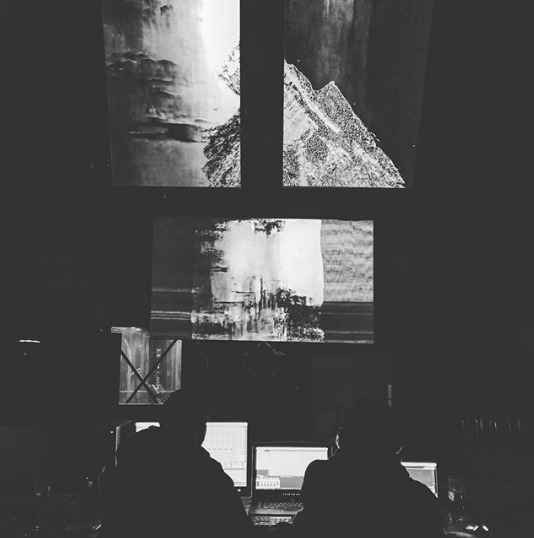
Apnoa and Claudia Rohrmoser will perform their Project presentation.
So buckle up and see you at the TOWER.
Thursday, September 12th 2019 21:00 - TOWER
all of Schmiede19 public program: English - Deutsch
0 notes
Text
Calls Calls Calls
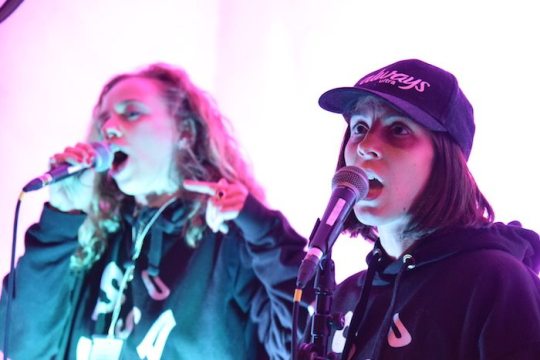
Deutsch drunter.
Calls close to Schmiede
3x subnetAIR and Salzburg MediaArt Grant - annually since 2010
3x 1.000 €, 1x 500 € and accommodation
Deadline: September 30th 2019 link - Get a feel what it looks like
Digital Spring 2019: Stand By - 18th - 22nd March 2020
Fee: Production budget Deadline: 30th September 2019 - link
Förderung Projekte Medienkunst - Land Salzburg
25.000,— Euro Bewerbungsrichtlinien
Deadline: Oktober 15th 2019 (Einlangen im Amt)
Salzburg State Scholarship for Media Art - annually since 2007
Prize money: 10,000 €
Deadline: currently February 28th 2020 // for all annual scholarships of the Kultur Land Salzburg: fine arts, photography, music, literature, performing arts and film - link
feralAIR - annually until 2020
Fee: € 1.000 € and assumption of travel costs and accommodation.
Deadline: May 31, 2020 - link
ORTung in Hintersee: Success - 7. to 25. January 2020
Fee: € 1.000 € and costs for travel, accommodation and meals
Deadline: September 9, 2019 - link
Ausschreibungen im nahen SchmiedeUmfeld
3x subnetAIR und Salzburg MediaArt Grant - jährlich seit 2010
3x 1.000€, 1x 500€ und Unterkunft - Frist: 30. September 2019
link - So schauts aus
Digital Spring 2019: Stand By - 18. - 22. März 2020
Honorar: Produktionsbudget Frist: 30. September 2019 - link
Förderung Projekte Medienkunst - Land Salzburg
25.000,— Euro Bewerbungsrichtlinien
Deadline: Oktober 15th 2019 (Einlangen im Amt)
Salzburger Landesstipendium für Medienkunst - jährlich seit 2007
Preisgeld: 10.000€ Frist: aktuell 28. Februar 2020 // für alle Jahresstipendien des Kultur Landes Salzburg: Bildende Kunst, Fotografie, Musik, Literatur, Darstellende Kunst und Film - link
feralAIR - jährlich bis 2020
Honorar: € 1.000€ und Übernahme der Reisekosten und Unterkunft.
Frist: 31. Mai 2020 - link
ORTung in Hintersee: Erfolg - 7. bis 25. Jänner 2020
Honorar: € 1.000€
Übernahme der Kosten für Reise, Unterkunft und Verpflegung
Frist: 9. September 2019 - call link - ORTung link
pic by Gabriele Krisch - Klitclique performing at Schmiede18
0 notes
Text
FeralAIRs - Chun Shao
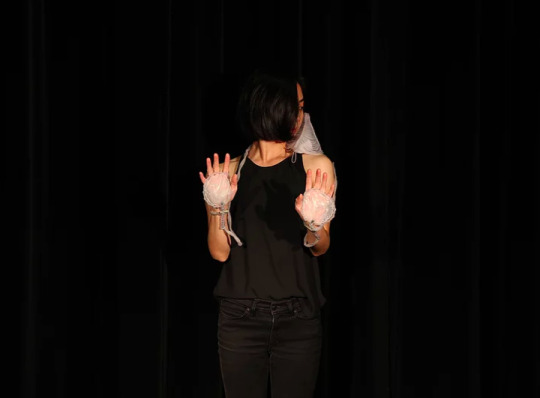
Three make it a party. Meet Chun Shao our third FeralAIR. Congratulations.
Chun Shao is a multimedia artist who is living in Seattle. Currently, Shao is pursuing her Ph.D. degree in Art and Technology major at DXARTS, University of Washington. In 2013, she received an MFA degree in Performance Art from The School of the Art Institute of Chicago. In 2010, she received her BFA in New Media Arts from China Academy of Art. Shao is interested in experimenting with the paradox of intimacy and loneliness in the digital world, especially from the communicational aspect. Shao has been making participatory performances, which integrated with wearable technology, for the past few years. She constructs performances by asking audience to hear, touch, and immerse themselves in the work. Her work insinuates a weak-willed mental state of perpetuating the relationships with the world and others. more
Chun Shao will spend September in Hallein to protype an emotive-textile watch kit, which explores the relationship between feelings and tactile sensations.Through the experience of touch, this project will archive a series of tangible emotions interpreted by electronic textiles. She plans to use diverse silicone fabrics, which will feature different degrees of tenderness and form an uncanny association with the human skin. In order to create organically moving textures, traditional embroidery stitches, beading, and fabric manipulation techniques will be explored and interwoven with electronic actuators (such as vibration motors, mini DC motors, muscle wires, air/water pumps, DIY color changing patches, etc.) These kinetic elements will be programmed to produce rhythmic movements and conduct different types of computational behaviours.
FeralAIR is part of the Feral labs network.
Feral Lab Network is a network of temporary dislocated hubs for research in art, technology and communities.
Feral Lab Network partners: Zavod Projekt Atol (ZPA), PIFcamp, Finnish Society of Bioart, Radiona.org, CATCH, Makery.info and us Schmiede.
Feral Labs Network is a project enabled by Creative Europe.
0 notes
Text
FeralAIRs - Rohrmoser - APNOA

The second FeralAIR of 2019 also goes to long time Smiths.
Congratulations to Claudia Rohrmoser and the artist duo APNOA (Sebastian Drack & Tobias Feldmeier). With Leuchtturm they want to build an immersive space into the Tower.
Immersive spaces are considered one of the key phenomena of our time. Medially staged/enhanced exhibitions aim at an art reception between museum, event and spectacular Gesamtkunstwerk. The trend towards immersive and interactive art education requires ever more complex technical innovations to create the magic of the moment that astonishes audiences. These technological processes affect scientific research interests (such as human-computer interaction) and economic applications (communication in space at eg. trade fairs or expos etc.).
Claudia Rohrmoser
Video Designer Claudia Rohrmoser was born in Salzburg, Austria. She studied Experimental Media Design at Berlin University of the Arts and Multimedia Arts at the FH Salzburg University of Applied Sciences. Focusing on visual music, her works include animation shorts, documentaries and video scenography. Her latest works were shown at Salzburg Biennale – Festival for New Music, in the ORF Radiokulturhaus Vienna and the Austrian Theatre Museum. Rohrmoser worked several years as a lecturer in experimental animation at FH Salzburg and as a professor of motion design at the BTK and UE University of Applied Sciences in Berlin. Currently she is professor in Digital Media and Experiment at FH Bielefeld University of Applied Sciences.
APNOA
APNOA is an audiovisual collective, founded by Sebastian Drack and Tobias Feldmeier. The artists aim for forward-thinking ideas and strategies in practice and theory, in order to provide immersive multi-sensory experiences and narratives, presented as audiovisual performances, installations and multimedia productions. Their work is settled in the field of performative interaction and seek for an ambiguous character generating synesthetic correlations whithin the act-theoretical semantics and immediate, aesthetic perception. APNOA participated in several international exhibitions, festivals and touring events in Europe and Asia like Big Data Art 2013 (Munich), ISMAR 2015 (Fukuoka), Algorave Tour 2015 (Japan), OÖ Landesausstellung 2016 (Linz), Interlab Festival 2016 (Salzburg), Prague Microfestival 2017 (Prague), Ars Electronica Festival 2017 (Linz), Patchlab Festival 2017 (Krakow).
FeralAIR is part of by Feral labs network.
Feral Lab Network is a network of temporary dislocated hubs for research in art, technology and communities.
Feral Lab Network partners: Zavod Projekt Atol (ZPA), PIFcamp, Finnish Society of Bioart, Radiona.org, CATCH, Makery.info and us Schmiede.
Feral Labs Network is a project enabled by Creative Europe.
0 notes
Text
FeralAIRs - Antoni Rayzhekov
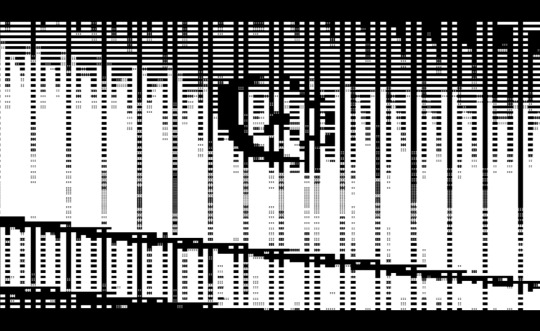
Our first FeralAIR of 2019 is a long time Smith.
Congratulations to Antoni Rayzhekov and his project BOREOUT.
BOREOUT is a brain-controlled participatory visual installation in which the visitor is invited to unveil a secret image only when a high level of disengagement is detected in his/her brain activity by a computer system. In other words: If the visitor is bored enough, the secret image will be assembled into its original form by the machine and can be seen. As a consequence of such an experience the visitor's engagement and interest might increase, which will eventually cause the image to go back out of “focus”. As a result it is possible the image to oscillate between focused and unfocused state driven by the visitor's tendency to either boredom or attention. The machine will provide a new secret image for every new visitor. The project “BOREOUT” examines a novel way of technology employment in cognitive based art practice, known as Affective Computing.
The term “boreout” is a neologism, coined by Peter Werder and Philippe Rothlin in 2007,describing a condition related to Boredom Burnout Syndrome occurring in the absence of meaningful tasks, rather than the presence of stress. Boreout consists of three elements: boredom, lack of challenge, and lack of interest. [Wikipedia]
Antoni Rayzhekov is an interdisciplinary artist working in the field of music, theatre and digital arts born in Sofia, Bulgaria and currently living in Vienna, Austria. He has a master degree in theatre directing and bachelor in drama acting at the National Academy for Theatre and Film Arts "Krastyo Sarafov" (Sofia, Bulgaria).
He studied jazz improvisation at the Vienna Konservatorium / jazz department (Austria) and computer programming at LearningTree (London, UK) and was an IT consultant for the United Nations Office, Vienna. He is a co-founder of the Vienna-based New Media label THIS.PLAY[2013], focused on interactive technologies and art, and a associate lecturer since 2012 in the Media and Digital Technologies (Interactive Media / Experimental Media) at the University for Applied Science (St. Pölten, Austria) and since 2016, a guest lecturer at the National Academy of Art (Digital Arts MA program / "Performative Media") - Sofia, Bulgaria.
He is a fellow at Akademie Schloss Solitude [2015-2017] - Stuttgart, Germany and Akademie Hallein [2014] - Hallein, Austria. For his works, he obtained awards, fellowships and grants from ProHelvetia, Soros Foundation, ComputerSpace, Ministry of culture - Bulgaria, BKA - Austria, Akademie Schloss Solitude, Akademie Hallein, among others. more
FeralAIR was enabled by Feral labs network.
Feral Lab Network is a network of temporary dislocated hubs for research in art, technology and communities.
Feral Lab Network partners: Zavod Projekt Atol (ZPA), PIFcamp, Finnish Society of Bioart, Radiona.org, CATCH, Makery.info and us Schmiede.
Feral Labs Network is a project enabled by Creative Europe.
0 notes
Text
feralLab at Schmiede19
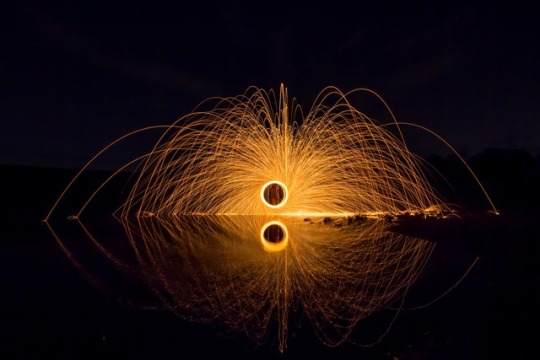
Let’s go wild.
(Deutsch drunter)
We are happy to announce the second half of Feral Lab Network at Schmiede. FeralAIR (deadline May 31st) will be complemented by our first scientists lab. The feral lab at Schmiede19 will sport a group of well seasoned scientists, researchers and designers in the area of human-computer interaction. This endeavour will be spearheaded by Martin Murer, Senior Scientist at the Center for Human-Computer Interaction at Salzburg University.
feral lab at Schmiede will do no less than make “Interaction at Speed of Light“ better. Our relations to and through digital gadgets are typically mediated by interfaces and computation that induce latency, implicitness and detachment. The feral lab at Schmiede19 will make this all better. Better things that talk back instantly. Things that are explicit. Things that foster attachment to and through technology. Technology that acts and feels like our physical environment. Things that avoid latencies and implicitness by going analoge. Things that interact at the speed of light. Soon they will have told us how they made it all better, surpassing speed of light ruins videos though …. We are working on it.
Feral Labs Network is a European collective of temporary dislocated hubs for research in art, technology and communities. The six Feral Lab Network partners are Zavod Projekt Atol (ZPA) / PIFcamp, Finnish Society of Bioart (FBAS), Radiona.org, CATCH, Makery and us Schmiede. All from six different EU countries but we share an interest in art-science research and contemporary do-it-yourself (DIY) & do-it-with-others (DIWO) communities.
Feral Lab Networks was enabled thanks to Creative Europe in particular and European Union in general. Thanks.
ferallabs.net
SchmiedeApplication open till May 31st
FeralAIR Call (deadline May 31st)
Schmiede19: better
September 11th - 20th
apply to Schmiede19 till May 31st general Info
labs at Schmiede19 general info
GERMAN / DEUTSCH
Feral Lab at Schmiede19
Wir freuen uns die zweite Hälfte von Feral Lab Network auf der Schmiede bekannt zu geben. FeralAIR (Call Frist 31.Mai) wird durch unser erstes Wissenschaftlerinnenlabor ergänzt. Das feral lab auf der Schmiede19 wird eine Gruppe von erfahrenen Wissenschaftlerinnen, Forscherinnen und Designerinnen auf dem Gebiet der Mensch-Computer-Interaktion beherbergen. Das Projekt wird von Martin Murer, Senior Scientist am Zentrum für Mensch-Computer-Interaktion der Universität Salzburg, geleitet.
feral lab auf der Schmiede wird nicht weniger tun, als die „Interaktion mit Lichtgeschwindigkeit“ zu verbessern. Unsere Beziehungen zu und durch digitale Geräte werden in der Regel durch Schnittstellen und Berechnungen vermittelt, die zu Latenz, impliziter Wahrnehmung und Distanzierung führen. Das feral lab at Schmiede19 wird das alles verbessern. Bessere Dinge, die sofort reagieren und sprechen. Dinge, die explizit sind. Dinge, die die Bindung an und durch Technologie fördern. Technologie, die wie unsere physische Umgebung wirkt und sich anfühlt. Dinge, die Latenzen und implizite Ereignisse vermeiden, indem sie analog vorgehen. Dinge, die mit Lichtgeschwindigkeit interagieren. Bald werden sie uns erzählt haben, wie sie alles besser gemacht haben werden aber aktuell ist die Überschreitung von Lichtgeschwindigkeit unvorteilhaft für Videos. Wir arbeiten daran.
Feral Labs Network ist ein europäisches Kollektiv von temporär und regional verteilten Zentren für die Forschung in den Bereichen Kunst, Technologie und Communitys. Die sechs Partner von Feral Lab Network sind Zavod Projekt Atol (ZPA) / PIFcamp, Finnish Society of Bioart (FBAS), Radiona.org, CATCH, Makery und die Schmiede. Alle aus sechs verschiedenen EU-Ländern, aber wir teilen das Interesse an der Schnittstelle künstlerische und wissenschaftlicher Forschung wie zeitgenössischen Do-it-yourself- (DIY) und Do-it-with-others-Communities (DIWO).
Feral Lab Networks wurde dank Creative Europe im Besonderen und der Europäischen Union im Allgemeinen ermöglicht. Vielen Dank.
0 notes
Text
CALL - Feral AIR till May 31st.

The first fruit of our new Feral Lab Network is an artist in residence call. Share and enjoy: see you in Hallein.
Residency + Grant - Hallein - September 2019
Project Development grant for artists / makers
# Grant of 1000, – Euro
# Access to Schmiede Hallein and the Feral Lab Network
# Feral Lab Network / Schmiede will cover the following costs
Travel, housing in Hallein and SchmiedeApplicationProcessingFee, Food at SchmiedeKitchen
# Feral AIR will happen in Hallein first till last week of September
Before, parallel and after Schmiede19: better
Prerequisite is a willingness to work with the context of Schmiede and the Feral Lab Network.
The aims of Feral AIR is to enhance / enable projects between the arts and the maker movement.
The Feral AIR - is a Feral Lab Network cooperation hosted by Schmiede Hallein enabled by Creative Europe program of the European Union.
Please send your submissions to [email protected]
Application documents
# Project proposal/sketch (max. 400 words)
# Documentation of work
# Curriculum vitae
# Deadline: May 31st 2019
# Answer: June 15th 2019
SchmiedeApplication open till May 31st
Schmiede19: better (September 11th - 20th)
Background Info:
Feral Lab Network
A network of temporary dislocated hubs for research in art, technology and communities. Six partners from six countries partners will organise a set of actions joined by their common interest into art-science research and contemporary do-it-yourself (DIY) & do-it-with-others (DIWO) communities. Instead on presentational modes like exhibitions and festivals, our main focus well be in connection and organising a series of camps and similar kinds of temporary creative environments, all with a strong emphasis on process-based activities like peer learning, field work, research and co-creation. What these activities have in common is their deliberate setting in a remote environment, away from the usual urban set-up of contemporary Creative Hubs. Partners we will create a variety of temporary creative hubs that vary in scope, format and topics covered, but are all joined by joined methodological starting point. These actions will be further extended and connected via a strong trans-national outreach and media strategy and accompanying developmental and community oriented Artist-In-Residence programmes.
Feral Lab Network partners:
Zavod Projekt Atol (ZPA) is the convener and initiator of the FeralLabs.net project. As an organization it has vast and long-standing experience in field work based artistic research all around the world, like the Makrolab, the Arctic Perspective Initiative and Changing Weathers. In 2015 ZPA initiated the Unmanned-Resilience project held at the Gora Plateau and the yearly PIFcamp, held at the Tiglav National Park.
PIFcamp is a 7-day hacker-base set in Slovenian nature, where art, technology and knowledge meet. PIFcamp is the event in the Slovenian calendar for technology based artists and art organisations. PIF Call 2019.
Finnish Society of Bioart (FBAS) based in Helsinki, is an organisation developing, producing and facilitating activities around art and natural sciences, with a focus on biology, ecology and life sciences. The Bioartsociety is the motor behind the Ars Bioarctica program which is a long term art&science initiative with a focus on the sub Arctic environment. The activities of Ars Bioarctica encompass the Ars Bioarctica residency programm, the Field_Notes field laboratories, specific workshops and educational services for University programs.
“Field_Notes – The Heavens” is taking place at the Kilpisjärvi Biological Station of the University of Helsinki in Lapland Finland. It is a one-week long art&science field laboratory. During the workweek, five groups composed of artists, scientists and other practitioners, led by expert hosts will develop, test and evaluate specific artistic approaches, based on the specific questions towards the heavens.
Radiona.org / Zagreb Makerspace organized numerous international hackathons and off-the-grid labs in the nature, combining contemporary practices of maker scene and (new) media arts with innovative use of natural resources. The lab nurtures access to knowledge and sharable cutting-edge practices in order to enhance creative processes and expression for all: the artists, the makers and the micro-communities.
Electric Wonderlands Camp will gather international guests – lecturers, workshop facilitators, makers / hackers, intermedia artists, technologists, designers, scientists, engineers and DIY tinkerers. The aim of the week-long camp is to to create environment for fostering development of creative practices in the fields of hybrid arts in the wider context of DIY and DIWO cultures.
CATCH is a recently initiated greenhouse for creative students with creativity, skills and ambitions to be part of a unique, multi-disciplinary environment in Helsingør. CATCH can be anchored in Helsingør’s dynamic cultural harbor, where students have the opportunity to connect theory with practice - in a meeting with real needs and premises from private and public companies and organizations that have challenges to be solved.
Makery.info / Digital Art International is both a producer and distributor of digital artworks and connected objects, was named Innovative Young Enterprise in 2014 and has launched a new media about the maker movement: Makery, media for all labs, an on-line media published in English and French. Makery, with its open-map referencing more than 1000 international fablabs, hackerspaces, medialabs, artlabs, and other third-places and creative hubs, is the platform for keeping abreast of innovations emerging from labs around the world, the scouting tool of new trends in digital fabrication, DIY culture and knowledge sharing. With its 50,000 unique visitors per month, Makery’s participation in the FeralLab consortium will help to reach an immense non-institutional audience, but even more importantly, will be able to reach places and communities engaged in the makers movement, non-formal education and open laboratories around the world.
and us, Schmiede.
http://www.ferallabs.net/ (coming soon)
0 notes
Text
FeralAIR 2019 - docu
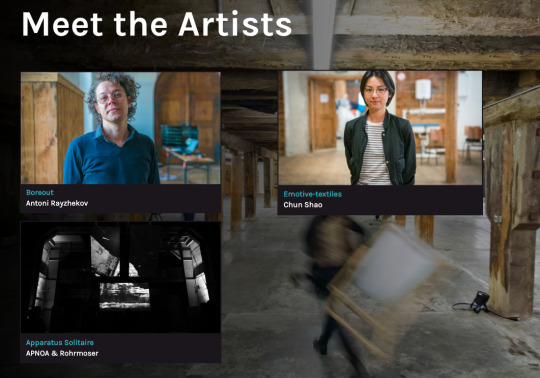
Please take a look back in time.
The documentation of the feralAIR is done, enjoy.
feralAIR is part of ferallab funded by Creative Europe.
At the end of the week we will know how feralAIR 2020 will look like.
0 notes
Text
Das wird die Schmiede 19: besser Die Labore und SmithProjekte stellen sich vor
Ein dichtes Programm erwartete Besucher und Schmiede-Teilnehmer am zweiten Tag des 17. MedienKulturFestivals. Von 12.00 bis 21.00 Uhr stellten sich im Stundenrhythmus die Labore und Projekte vor, die an den kommenden Tagen zur Mitarbeit einladen und deren Endergebnisse während der Werkschau am Freitag, 20.9. ab 19.30 Uhr die Alte Saline auf der Pernerinsel wieder in eine in eine Kunst- und Wunderkammer verwandeln werden.
Die Labore laden zur Mitarbeit ein und unterstützen mit Rat und Tat
Das SudhausLab präsentiert sich unter dem Titel „Kunst und Kultur in Hallein“ als Servicebüro, um Smiths und Interessierte aus der Region miteinander in Kontakt zu bringen. „Das Ziel ist es,“ laut Laborleiterin Simone Seymer, „in den kommenden Tagen gemeinsame inhaltliche Ideen zu finden, zu besprechen, zu entwickeln und so Brücken zwischen zu bauen. Zum einen zwischen Institutionen und Protagonisten, zum anderen zwischen ansässigen Initiativen und den Teilnehmerinnen aus dem Schmiedenetzwerk, das bereits in über 20 Ländern verortet ist.“ Außerdem ist die Schmiede19 ein Austragungsort für Projekte des Experiments „Frei.Stadt.Hallein“, das elf leerstehende Häuser oder Geschäftslokale im Stadtzentrum von Hallein für Kunstaktionen bespielen wird.
Das VoiceLab unter der Leitung der ausgebildeten Opernsängerin Kristina Gorke will die doch eher technologie-orientierten Schmiedeteilnehmer unter dem Arbeitstitel „Die Stimme von Atmung bis Instrument“ mit ihrer Leidenschaft für den Gesang anstecken und mit der Basis des klassischen Gesangs vertraut machen. „Viele machen elektronische Musik, wenige arbeiten analog. Die Basis des Singens hat aber über das Musizieren hinaus sehr viel mit Körperbewusstsein zu tun.“ so Gorke. Deshalb bietet sie während der Schmiede Einzelunterricht an, um den Smiths „etwas mitzugeben“. Die Schüler haben die Option, selbst ein Musikstück mitzubringen oder aus Mozart, Brahms, Schubert oder Popsongs auszuwählen. Am Donnerstag 19.9. steht dann noch der Workshop „Atempause“ auf dem Programm. Während der Werkschau gibt es dann noch einen Auftritt mit klassischem Gesang.
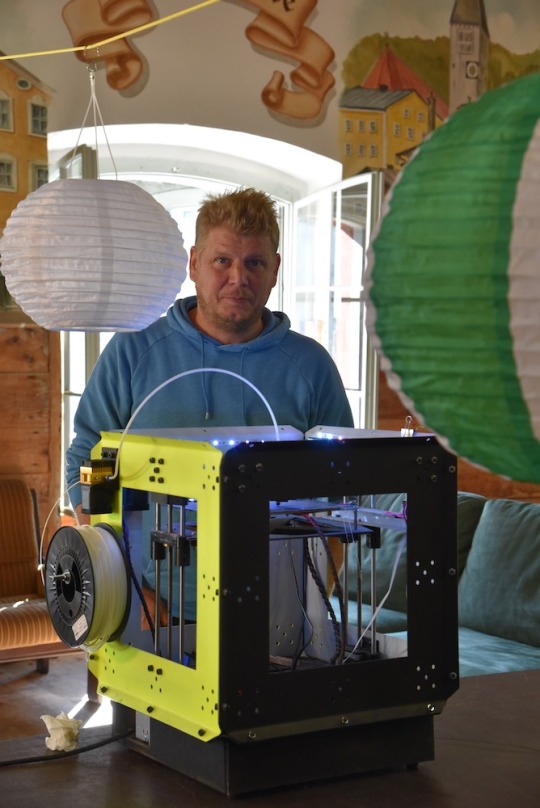
Das Tinkerlab bewegt sich zwischen Kunst und elektronischem Basteln. Wie jedes Jahr ist es auch 2019 mit Lötstationen, Arduino-Boards, Werkzeug, Sensoren und Bauteilen bestückt. Heuer kommt auch noch ein 3D-Drucker des Do!Lab hinzu. Unter der fachkundigen Anleitung von Sophie Birkmayer und Tammo Claassen sollen Objekte entstehen, die man berühren kann, die von Motoren bewegt und von Mikroprozessoren gesteuert werden, die Geräusche machen und die kommunizieren können. Auch einfache handwerkliche Techniken wie löten kann man im Tinkerlab lernen. Dafür haben sich schon einige der internationalen Medienkünstler angemeldet. „Wenn geholfen werden kann, dann helfen wir“ umreißt Tammo Claassen seine Aufgabe für die Dauer der Schmiede.
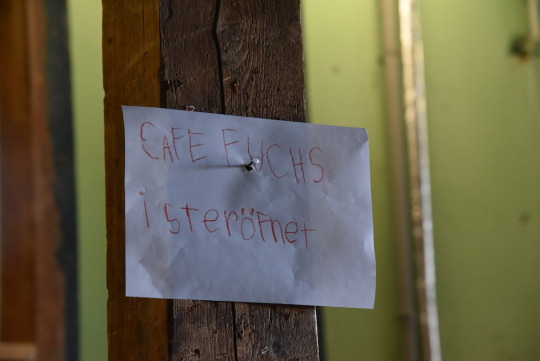
Alte Bekannte sind Kathi Macheiner, Lilo Krebernik, Mac Krebernik vom adhocrates Kollektiv, die auch 2019 wieder das adhocLab anbieten. „Zwischen kreativer Freiheit und Familie“ soll im adhocLab aufgezeigt werden, dass Kinder jeden Alters in kreatives Arbeiten einbezogen werden können. Geplant ist der Aufbau eines Ameisraums, ein Raum, den man durch optische Verzerrung „groß betritt und klein verlässt“. Ob und wieviel davon realisiert werden kann, wird auch durch die Kinder mitbestimmt. Diese haben inzwischen zusätzlich einen eigenen Plan entwickelt: mit gefundenem Geschirr, das zunächst gründlich sauber gemacht werden musste, eröffneten sie bereits das Fuchscafé, in dem die Kinder - wie Füchse geschminkt – selbstgebackene Waffeln und Getränke anbieten. Ein eigenes Logo fürs Café wird noch designt.
Zum vierten Mal ist das Studio 3 des Zentrums für Mensch-Computer-Interaktion der Universität Salzburg auf der Schmiede. Auch dieses Jahr wieder widmet man sich unter der Leitung von Dorothé Smit und Mascha Beuthel den vielfältigen Interaktions-Schnittstellen zwischen Mensch und Maschine. Es geht um Interaktionsdesign und interdisziplinäres Prototyping – Studio 3 bezieht verschiedenste Bereiche wie Medienkunst, Architektur, Psychologie, Materialkunde ein. Dabei möchte man auf die Improvisationskraft der SchmiedeTeilnehmerInnen zurückgreifen. 2019 wird aber auch das Projekt „Deaf Tones“ – an dem bereits im Vorjahr gearbeitet wurde - weiter vorangetrieben, das Gehörlosen ermöglichen soll, Klänge über die Fußsohlen wahrzunehmen. Darüber hinaus versteht sich Studio 3 als Komplementär zum Tinkerlab, die Laborleiterinnen bieten Schmiedeteilnehmerinnen Support bei allen Fragen rund um elektronische Probleme.

Zu den langjährigen Schmiede-Laboren gehört JamIsland - unter der bewährten Leitung von Florian Jindra und René Baumgartner gibt es einen GameJam unter dem Motto: In zwei Tagen von der Idee zu einem funktionierenden Computerspiel. Am Freitag, 13.9. ab 12.00 Uhr heißt es: Los geht’s. Es liegen bereits etliche Anmeldungen vor – vom „Bloody Beginner“, dessen Computerskills laut Eigendefinition „zwischen 0 bis 0,1“ liegen, der aber trotzdem mal ins Spiele-Programmieren und -Design reinschnuppern möchte bis zu Profis, die bereits Vorerfahrungen mit diversen Programmierplattformen mitbringen. Die erste Stunde des GameJams gehört der Themenfindung. Ab 13.00 Uhr geht’s los mit dem Einführungsworkshop für Anfänger bezwihungsweise mit dem Programmieren und Designen. Verfolgt wird das Ziel, dass jede Teilnehmerin bereits am ersten Tag über ein kleines funktionsfähiges Spiel verfügt, welches an den folgenden Tagen perfektioniert werden kann. Aber auch Teambildungen sind erwünscht. Die Ergebnisse werden am Sonntag, 15.9. um 17.00 Uhr und während der Werkschau zu sehen sein.
Neu ist das Feral Lab Network, gefördert im Rahmen eines EU-Projekts, das bis 2020 läuft. Das Netzwerk ist ein europäisches Kollektiv von temporär und regional verteilten Zentren für die Forschung in den Bereichen Kunst, Technologie und Communitys. Die sechs Partner sind neben der Schmiede Hallein, das Atol Institute (SI), Makery/Digital Art International (FR), Catch/Helsing?r Kommune (DK), Bioart Society (FI) und Radiona (HR).
Während der Schmiede bietet das Feral Lab Network unter der Leitung von Martin Murer und Pete Bennett zum einen das feralLab an. Hier geht es um eine wesentlich erweiterte Form von Schnittstellen unter Einbeziehung von Materialien und Sensorik – wie z.B. Geschmack. Ausgehend von der Position der Wissenschaft, wird versucht künstlerische Praktiken in wissenschaftliche Ansätze zu integrieren. Drei Gedankenkonstrukte sollen in den kommenden Tagen gemeinsam mit anwesenden Künstlerinnen und der Infrastruktur der Alten Saline umgesetzt werden: „Body based hybrid game that benefits society“, „Hiking based imaginary game“ und “Cigarette driven interactive project“.
Zum anderen bietet das Feral Lab Network auf der Schmiede feralAIR, ein Artists in Residence Programm an. Die Auserwählten sind Chun Shao, die an ihren emotionalen Textilien arbeitet, Antoni Rayzhekov, der sein Projekt BOREOUT, eine gehirngesteuerte partizipative visuelle Installation vorantreibt und Claudia Rohrmoser, Kollektiv APNOA (Sebastian Drack & Tobials Feldmeier), die an ihrem Work in Progress Projekt „Leuchtturm“ weiterarbeiten.
Nach den Laborvorstellungen heißt es „Bühne frei“ für SmithProjects.
Das Projekt HERO-MATCH von Christian Schratt orientiert sich an einer Game/Talk Show zum Thema Nachhaltigkeit und Gemeinschaft und ist Teil des Climate Launch Pads. Der Prototyp ist auf die Schmiede gekommen und soll mit der Unterstützung der Schmiede-Teilnehmerinnen optimiert und im wahrsten Sinn des Wortes zum Leben erweckt werden. Ob es um Programmiersupport, Wissen um den Umgang mit Farben oder das Schaffen von Ton-Signations geht – hier werden die kommenden Tage entscheidend dafür sein, was am Donnerstag, 19.9. ab 21.00 Uhr im Boilerraum der Alten Saline zu sehen, zu hören und zu erleben sein wird.
Das Projekt Techno Shaman lädt Künstlerinnen unterschiedlichster Disziplinen ein, während der Schmiedetage mit einer künstlichen Intelligenz zusammen die Grundlage für technologisch basierte schamanistische Rituale zu schaffen. Dabei sollen die Medienkünstlerinnen gemeinsam mit dem Team Cenk Güzelis, Schamanick Hanzo, Helvijs Savickis, Jolyane Langlois und Nicholas Eckl mit einer künstlichen Intelligenz zusammenarbeiten und die Grundlage für die technologisierten Rituale schaffen. Die aufzeichnende KI-Station erstellt dabei eine Datenbank, die ein AI-Algorithmus interpretiert. Die daraus resultierende interaktive multisensorische Umgebung verbindet den physischen mit dem virtuellen Raum. Während der Werkschau am 20.9. sollen drei 10-15minütige Rituale gezeigt werden: „Finding yourself in room of data“, „meeting the new skin“ in Form eines multisensorischen Anzugs und – Arbeitstitel – „connecting to the universe“. Eine Tänzerin im Spezialanzug soll mit Musikern interagieren. Die Rituale während der Werkschau sollen als Grundlage für eine Projektdokumentation dienen, mit der wiederum Projektpartner und -unterstützer angeworben werden könne.
Den Abschluss und Höhepunkt des langen Tages stellt die erste Präsentation von „Saline - Dark Factory“ aus dem Schmiede-Projektzyklus „Cinema Vertigo im Leuchtturm“ dar. Ton-, bild- und lichtgewaltig inszenieren das audiovisuelle Kollektiv APNOA (Tobias Feldmeier, Sebastian und Valerian Drack) und die experimentelle Medienkünstlerin Claudia Rohrmoser den Verdampferturm der Alten Saline auf der Pernerinsel in Form einer gut besuchten Live Performance als immersiven Raum, der im wahrsten Sinn des Wortes „alle Sinne adressiert“. Die mediale Rauminszenierung ist das erste Ergebnis einer Forschungskooperation zwischen Schmiede Hallein, FH Salzburg und der Kunstuniversität Linz und wird im Rahmen des Feral Lab Networks von der EU gefördert. De facto versteht sich „Saline - Dark Factory“ – obwohl aus der Sicht des Publikums bereits beeindruckend perfekt - auch als Work in Progress, das von Freitag bis Sonntag noch weiter bearbeitet wird. Die optisch einnehmende Animation zeigt 3D Modelle aus Fotoscans der Saline Hallein und Bilder von Industriearchitektur, die von einer künstlichen Intelligenz entworfen wurden. Die Musik von Sebastian Drack füllt das Volumen des Turms ausgehend von einem zentralen Lautsprecherobjekt, das mittels Ambisonics Technologie 20 einzelne Tonspuren in alle Richtungen des Raumes schickt und in Bewegung bringt. Dadurch wird der Klang von den Materialien der Architektur reflektiert und hörbar beeinflusst.

Der inhaltliche Anknüpfungspunkt: Der Verdampferturm ist generell seit einigen Jahren für menschliche Aktivitäten und Projekte gesperrt, genützt kann nur mehr das Erdgeschoss werden. Deshalb darf und muss der Computer zunehmend den Menschen ersetzen und über Architektur „nachdenken“. Hinter dem Projekt steht laut Claudia Rohrmoser auch die vieldiskutierte Prognose, dass der Computer den Menschen bei immer komplexeren Aktivitäten ersetzen wird. Auf Grund der zunehmenden Leistungsfähigkeit der Maschinen und immer intelligenteren Algorithmen können mittlerweile auch quasi kreative Leistungen vom Computer übernommen werden – wie z.B. das Schreiben einfacher Drehbücher und Filmmusiken nach einem etabliertem Erfolgsschema. Dem Menschen bleibt hingegen die Aufgabe innovative und emotional gesteuerte Kreativleistungen zu erbringen.
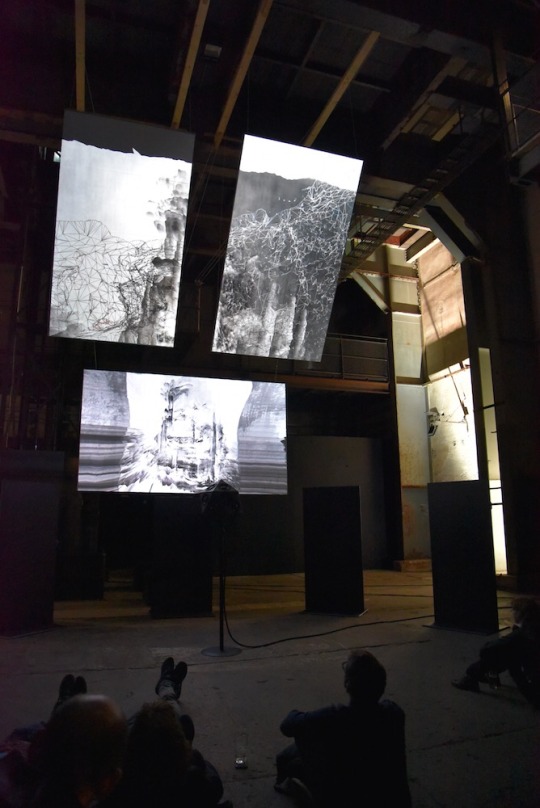

An den nun folgenden Tagen wird „Saline“ zu einer von Computern autonom betriebenen Installation, die keine menschliche Interaktion mehr benötigt. Am Freitag und Samstag ist der Verdampferturm noch begehbar, die AV-Installation läuft von 21-24.00. Von Sonntag bis Donnerstag ist eine Betrachtung der Installation von 21-24.00 ausschließlich von außen, vom Vorplatz aus möglich. Erst zur Schmiede Werkschau am Freitag, 20.9. wird der Verdampferturm - als Abschluss und Höhepunkt der Schmiede19 – wieder von 21-00.00 für das Publikum geöffnet.
Wir dürfen also auf die öffentlich zugängliche Werkschau am 20.9. ab 19.30 sehr gespannt sein ...
Fotos & Text Gabriele Krisch
0 notes
Text
Schmiede19 sum up to date

Schmiede is self assembling in large parts, but here is an overview of what we know as of today about better in Schmiedember. More is in the making and this is most likely only the tip of the iceberg.
The general flow will remain: Arrival, Inspiration, Planning, Work, Presentation, Farewell.
SchmiedeApplication till May 31st
The Smiths create every Schmiede.
Please remind the people you want to see in Hallein.
Schmiede19: better
September 11th - 20th
SchmiedeStammtisch Vienna
May 30th - 19:00 - AU - Brunnengasse 76, 1160 Wien
We will try our best to communicate what is in the making on the Schmiede19 blog and in the WelcomeMail to be sent on June 15th.
Follow these tags to get up to date summaries:
Schmiede19 blog
Labs at Schmiede
SmithProjects
Feral Lab Network (FeralAIR call till May 31st)
Recent English interviews:
“A time when it’s not about winning but about being”
Schmiede: cooperative prototyping in Austria
0 notes